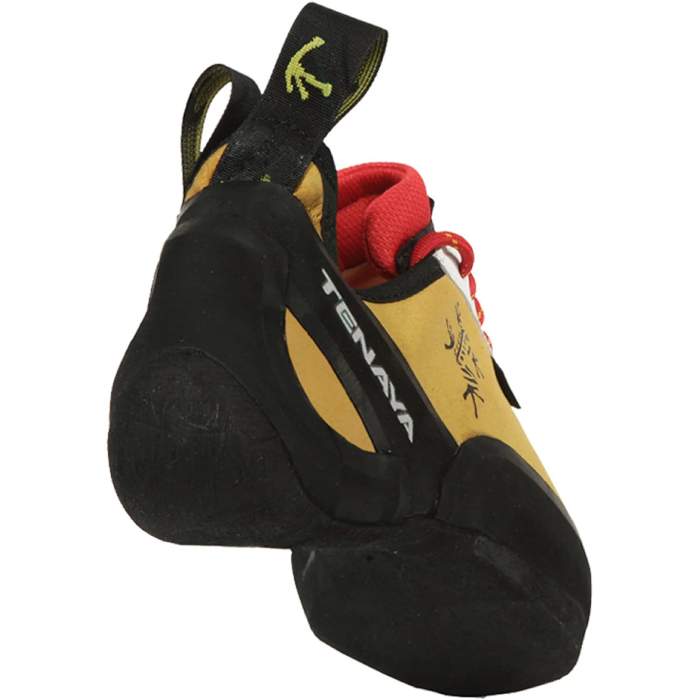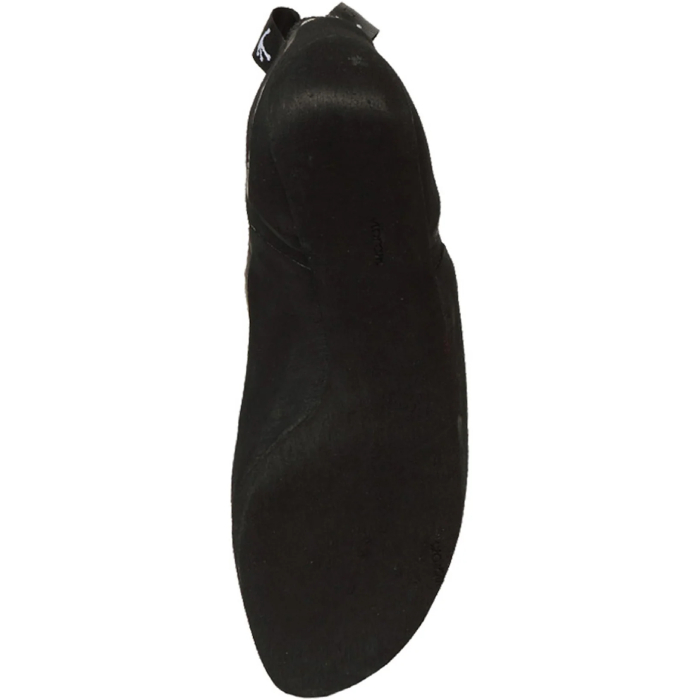Masai
Description
Favoured by top level climbers, the Masai is one of the Tenaya's most preferred shoe. It stands out due to its balanced features.
More experienced climbers know that on the more challenging routes movements change constantly between sharp, microscopic interlinear spaces and rounded, sloping rock faces. For that reason you need a shoe which is able to take all the pressure on the tip while at the same time responding with precision and sensitivity to requirements of friction and grip.
The sum of all these features is balance and that is the Masaiʼs most outstanding feature.
Retail price
When you click a link below and then checkout online, no matter what you buy (climbing gear or not), we get a small commission that helps us keep this site up-to-date. Thanks!
| Weight | 680 g Single : 340 g / 12.0 oz |
| Closure Type | Lace |
| Gender | Unisex |
| Volume | Low Narrow |
| Sizing Information |
4-14 US M 5-15 US W3-13 UK (mid sizes included) Take your average size for European and/or U.S. based climbing shoe brands. Your Tenaya size should be approximately 0.0 to 0.5 sizes larger than your average size in European brand shoes, or 0.5 to 1 size smaller than your average size in U.S. brand shoes. Downsize the Oasi and Tarifa 0.5 size smaller than this. |
| Best Use (Highest Performance) |
Trad / Crack Multi-pitch Sport / Face Over-hanging |
| Asymmetry | Low |
| Tongue Details | not provided by the brand |
| Last Details | Shape: Arched (technical) Construction: not provided by the brand Tenaya considers the Masai last to be narrow and symmetrical. |
| Upper Material | not provided by the brand Microfiber |
| Midsole Material | not provided by the brand 2D PLT 10 |
| Sole Material | 4.0 mm
Vibram XS Grip
Rand: not provided by the brand |
| Footbed Lining | TXT treated cotton |
No reviews yet.
Needless to say, I was impressed at how well the Masai handles on the edges, although hardly surprised. The full-length sole is about as stiff as they come, which proves plenty of under-foot support. Once the laces are tightly fastened and the heel properly secured, the board-stiff sole is tightly secured to the bottom of your foot. This creates the support we rely on while standing on micro edges and the high levels of comfort that is appreciated on big-wall adventures.
The Masai and Oasi are just a small part Tenaya’s latest rock shoe range, but compliment each other perfectly. With just these two shoes one should happily be able do tackle everything from extreme bouldering to multi-pitch rock routes and in no way feel disadvantaged to climbers.
I wore the shoes all day in comfort and found them easy to pull on and off. I have pretty slim feet and found myself tightening the laces to the max to make them fit, so if your feet are any slim you may have to try on several pairs to get just the right fit.
I fit the Masai one size below my street-shoe size and they passed the comfortable-out-of-the-box test. My toes were a little knuckled but the toe-box accommodated them without being sloppy. On the rock they stuck to skuzzy smears and didn’t roll laterally on my foot or slip in the heel. With the foot locked in and the asymmetrical toe point, and maybe because of Tenaya’s proprietary construction method, these shoes were very precise on edges. Over six months of wear the Masai didn’t stretch and the fit remained comfortable. This is a great shoe for steep edging, vertical smearing and finger cracks.
Testers found they excelled on difficult vertical routes, like on seven pitches of miniscule sandstone edges on the dead-vertical Prince of Darkness (5.10c), Red Rock, Nevada. Testers have had them for eight months, and each one has gotten consistent performance on every single pitch, from right out of the box to thousands of vertical feet later. “My favorite aspect of these shoes is their predictability,” said one long-term tester. “I put them on and know exactly what I’m getting every time.” That’s thanks to the super-sticky and durable Vibram XS Grip rubber, as well as the synthetic upper that doesn’t stretch. Plus, the laces let you fine-tune the fit, so you can go tight when you need to crank out some moves, or loose for warming up or cruising moderates.


















